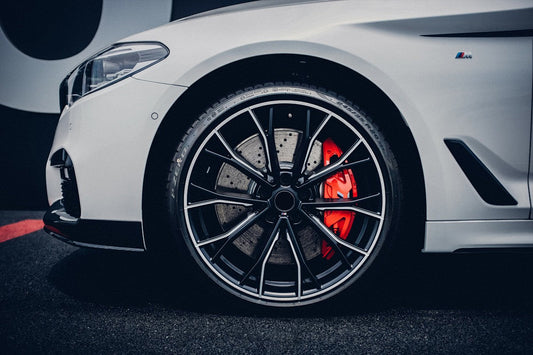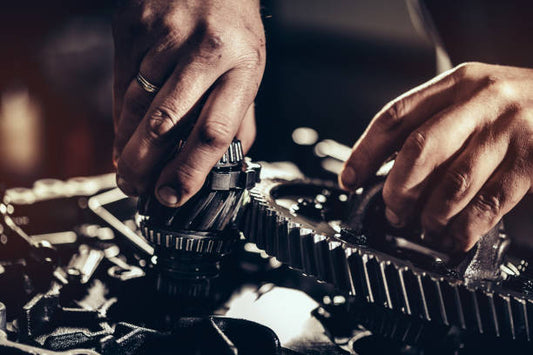Low Oil Pressure & Excessive Oil Consumption
Low Oil Pressure

Ever seen that little red oil can icon flash on your dashboard? Yeah, that’s not a “maybe later” reminder—it’s your engine screaming for help. Low oil pressure happens when there’s not enough lubricant coursing through the system, and that can wreck everything from bearings to camshafts. But here’s the kicker: It often teams up with excessive oil consumption, creating a double whammy of engine stress.
Why does oil pressure drop? Maybe your oil pump is worn out (thanks, 100k miles of hard labor), or there’s a leak somewhere—gaskets, seals, even a cracked oil pan. Or worse: Your oil filter’s clogged, forcing oil to take the path of least resistance which might be out of the engine instead of through it. And if you’re driving a high-mileage car? Sludge buildup can clog oil passages, turning your engine into a rusty water park where oil can’t even try to flow properly.
Excessive Oil Consumption
So your oil level’s low again, and you’re not leaking it (we checked the ground, no puddles). Welcome to the world of “consume oil” without a visible drip. This sneaky problem has a few usual suspects:
1. Worn Piston Rings: The Unseen Leak

Piston rings keep oil out of the combustion chamber when they’re healthy. But over time, they wear down, letting oil sneak past into where the fuel and air mix. Burn that oil, and you get blue smoke from the tailpipe (yes, that’s your engine coughing up its lunch). Worse, this consume oil cycle also dumps unburned hydrocarbons into the air—bad for the planet, worse for your catalytic converter.
2. Valve Seals: The Slow Drip
Valve seals are like tiny umbrellas, keeping oil from dripping into the cylinders when the engine’s off. But heat, age, and poor maintenance can make them crack or harden. Overnight, you might lose a teaspoon of oil… but over a month? That adds up to a quart—and a check engine light that won’t shut up.
3. PCV Valve: The Forgotten Hero
The positive crankcase ventilation (PCV) valve is supposed to recycle blow-by gases (unburned fuel and oil vapors) back into the intake. But if it’s stuck open or clogged, it can suck too much oil vapor into the engine, making your PCV system work overtime—and your oil level plummet. Fun fact: A bad PCV valve is a common culprit behind “oil consumption” in older cars.
When Low Oil Pressure Meets Excessive Consumption
Here’s the problem: These two issues feed each other. Low oil pressure means less lubrication, so engine parts wear faster—like piston rings grinding down quicker, or valve guides getting looser. That accelerated wear makes oil consumption worse, which drops oil levels further… and suddenly, you’re in a death spiral of friction, heat, and expensive repairs.
Take blow-by, for example. When rings are worn, more combustion gases sneak past into the crankcase. This pressurizes the crankcase, forcing oil past seals and gaskets (hello, oil leak car!) and making the PCV system work harder. The result? More oil burned, lower oil levels, and even more blow-by. It’s a loop that’ll empty your wallet faster than a gas-guzzler on a road trip.
How to Spot (and Stop) These Issues Before They Explode
First rule: Check your oil level regularly. If it’s dropping faster than your patience with traffic jams, something’s wrong. Second: Watch for smoke. Blue smoke = oil burning in the cylinders. White smoke = coolant mixing with oil (a whole other nightmare). Third: Listen to your engine. Knocking, ticking, or grinding sounds? That’s metal-on-metal, and it’s not a love tap.
But don’t just drive around hoping for the best. Get an oil analysis done—those lab folks can spot metal shavings, fuel dilution, or coolant contamination before they turn into $2k repair bills. And if your oil pressure gauge is always low, swap that old oil filter for a new one, check for leaks, and maybe even flush the engine (if it’s been a while).
Oh, and “oil leak car”? Don’t ignore those drips under your car. Even a slow leak can turn into a full-blown “consume oil” crisis if left unfixed. And if you’re dealing with an “oil leak car,” get it addressed ASAP—dripping oil on hot exhaust manifolds is a one-way ticket to a fire.
Oil Pressure and Consumption Aren’t “Minor” Issues
Your engine doesn’t care if you’re late for work or on a budget. If oil pressure is low or it’s guzzling oil, it’s sending you a clear message: “Help me, or I’ll break.” Ignoring it might save you a few bucks now, but it’ll cost you thousands later—plus the headache of explaining to your boss why you’re late because your car died on the highway.
So stay proactive. Check your oil, listen to your engine, and fix problems before they turn into emergencies. Your engine (and your wallet) will thank you.




